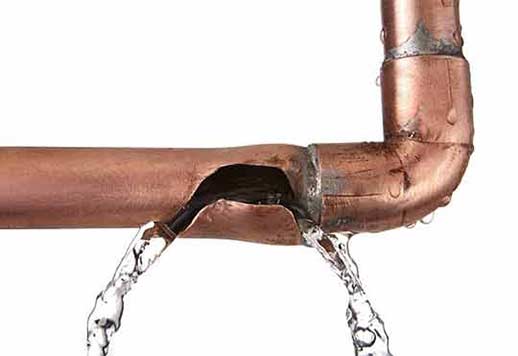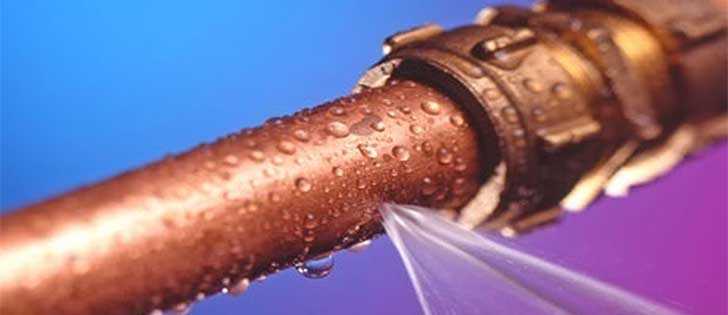The Hidden Dangers of a Burst Pipe and How to Fix It Quickly
The Hidden Dangers of a Burst Pipe and How to Fix It Quickly
Blog Article
Preventing Ruptured Pipeline: Important Tips to Protect Your Pipes
Protecting against ruptured pipes is a crucial issue for house owners, particularly throughout chillier months when the threat of freezing is enhanced. Carrying out tactical procedures such as correct insulation, regular examinations, and keeping regular interior temperature levels can dramatically decrease the chance of pipe failing. Additionally, recognizing emergency procedures equips home owners to respond quickly to possible plumbing concerns. Lots of are not aware of the details susceptabilities that their pipelines may deal with. Discovering these susceptabilities can provide very useful insights into securing your pipes system efficiently.
Understand Pipeline Vulnerabilities
Understanding pipe vulnerabilities is crucial for effective pipes maintenance and preventing pricey damages. Several factors add to the vulnerability of pipes to ruptureds, including product composition, age, and environmental problems. Older pipes, specifically those made from galvanized steel or polybutylene, typically deteriorate over time, bring about increased threat of ruptures and leakages.
Temperature variations can likewise substantially effect pipe stability. In colder climates, water caught in pipes can ice up, exerting and expanding pressure on the pipeline walls, which might inevitably cause a ruptured. High water stress can stress pipes, especially at bends and joints, increasing the chance of failure.

Insulate Pipes Properly
Correct insulation of pipes is essential for preventing cold and succeeding bursts during cold climate (burst pipe). Shielding your plumbing system effectively safeguards versus temperature drops that can cause pricey damage. Begin by identifying at risk areas where pipelines are revealed to outdoor temperature levels, such as basements, attics, and exterior walls
Use foam pipe insulation sleeves or cover insulation tape around these areas to supply a safety obstacle. Guarantee that all sections of the pipes, particularly those with minimal warmth direct exposure, get adequate insulation. Pay special attention to joints and installations, as these are more prone to freezing.
When protecting, it's necessary to choose products that meet neighborhood structure codes and are appropriate for the specific atmosphere. For example, fiberglass insulation is frequently suggested for its thermal resistance residential properties - burst pipe. In addition, think about making use of heat cords or tape in severe problems, which can be connected in to give supplementary heat
Routinely examine insulated pipelines for any indications of wear or damages, as compromised insulation can decrease its performance. By taking these proactive measures, you substantially decrease the threat of pipeline bursts, making sure a reputable plumbing system throughout the winter months.
Maintain Consistent Temperature Level
A stable interior temperature level is necessary for stopping burst pipelines throughout the icy months. When temperature levels decline, water within pipes can ice up, expanding and developing pressure that might inevitably create the pipes to ruptured. To reduce this risk, home owners must maintain a constant temperature level throughout their space, ideally no reduced than 55 ° F(13 ° C)Utilizing a programmable thermostat can assist take care of interior temperature levels effectively, making sure that rooms with plumbing continue to be warm even when your home is empty. Pay unique focus to locations that are more vulnerable to cold, such as basements, attic rooms, and garages. Keeping closet doors open under sinks can also permit warmer air from the home to flow around pipes.
In enhancement, it is prudent to enable taps to drip somewhat throughout extreme cool spells. This small circulation of water can prevent cold by minimizing stress within the pipelines. During especially extreme weather condition events, consider briefly putting on hold any type of nighttime problems on your thermostat to keep a consistent warm environment. By executing these approaches, home owners can considerably minimize the risk of pipeline bursts and guard their pipes systems against the harsh winter season aspects.
Regularly Check Pipes
Regular examinations of plumbing systems are vital for protecting against burst pipelines and keeping total home integrity. Regular checks permit house owners to recognize prospective problems prior to they rise into costly repair services or significant water damages. During these assessments, it is vital to take a look at visible pipes for indicators of rust, leaks, or wear. Pay special attention to locations vulnerable to freezing, such as basements, attics, and exterior wall surfaces.
In addition, checking connections and joints is vital, as these points are frequently at risk to leaks. House owners ought to likewise evaluate water pressure levels, as extreme pressure can strain the plumbing system and boost the threat of pipe ruptureds.
Take into basics consideration organizing professional plumbing assessments a minimum of annually, particularly prior to winter season, to ensure your system is prepared for colder temperature levels. Normal examinations not only aid in identifying prompt concerns however likewise foster long-term upkeep techniques that can improve the lifespan of your plumbing system. By being aggressive in your approach, you can guard your home against the expensive and disruptive effects of burst pipelines. Focusing on pipes examinations is an investment in your house's health and wellness.
Know Emergency Situation Treatments
Recognizing emergency treatments is vital for every home owner, especially after conducting regular plumbing inspections. Being gotten ready for a pipes emergency can considerably reduce damages and save prices. Initially, situate your major water shut-off valve; it is commonly found near the water meter or where the major line enters your home. Acquaint yourself with its operation, as turning off the supply of water rapidly can protect against comprehensive flooding.
Following, maintain essential tools convenient. try this out A plumbing emergency situation package must consist of a wrench, plunger, and towels, along with a flashlight and a container for small leaks. Furthermore, consider having the call info for a relied on plumbing conveniently available, must the situation intensify past your control.
If you spot a leakage or burst pipeline, immediately shut off the water system and inform your plumbing professional. In addition, record the damages with photographs for insurance coverage functions. burst pipe. Know the indicators of potential pipes concerns, such as uncommon water pressure fluctuations or damp areas on wall surfaces
Eventually, positive her latest blog knowledge and swift activity are important in handling plumbing emergencies, ensuring your home continues to be protected and minimizing prospective damage.

Conclusion
To conclude, stopping burst pipes necessitates a multifaceted strategy that consists of understanding pipe vulnerabilities, proper insulation, preserving consistent indoor temperatures, normal examinations, and understanding of emergency situation treatments. By carrying out these necessary techniques, the risk of plumbing failures can be dramatically minimized, thus making certain the longevity and performance of the pipes system. Proactive measures not just guard against possible damages yet additionally contribute to general water preservation and the protection of residential or commercial property.
In colder environments, water caught in pipelines can ice up, exerting and broadening pressure on the pipe walls, which might inevitably lead to a ruptured. When temperature levels drop, water within pipelines can ice up, expanding and developing stress that may inevitably trigger the pipelines to burst. By applying these techniques, house owners can substantially lower the danger of pipeline bursts and guard their pipes systems against the extreme winter months elements.

Report this page